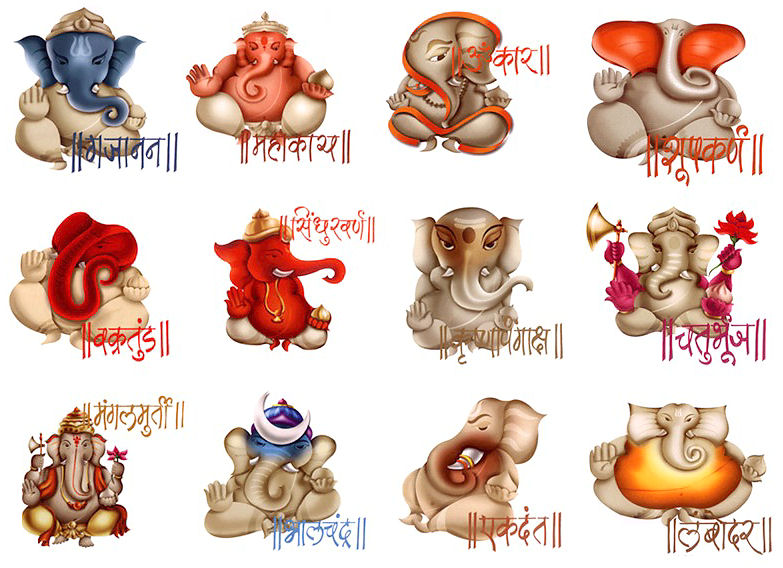Ekadant (one-toothed)
To scribe the Mahabharat Katha Ganeshji removed one of his tusks to carve a quill from it. He then scribed the epic on palm leaves as the sage Ved Vyas recited it. The scribing took three years!In south India there is a belief that when ploughing first began on earth, it was Lord Ganeshji who first ploughed using one of his tusks
In the Uttar Ramayan, Brahmand Puran and Padma Puran there is a reference of a battle between Ganeshji and Parshuram. During the duel, the latter's axe fractured one of Ganeshji's tusks According to the Brahmand Puran, it was his left tusk.
There are other names related to his body and virtues.
A few commonly known are listed below:
Lambodar - from the long - 'lambo', tummy - 'udar'.
Gajkarna - from the large elephant 'Gaja' ears - 'karna.'
Kapil - from his ruddy complexion.
Vikat - heavy-bodied.
Bhalchandra - having a Chandra (moon) on his forehead - 'bhal.
Dwaimatur - one who has 'dwi' - two, 'mata' - mother; Parvati - who gave birth to him and Malini - a demoness who nurtured him
Vakratund - one who breaks the ego of he who behaves anti-socially ('Vakra').
Mudgal - In south India, a special 'Mudgal Puran' extols Ganapati's glory. It cites 32 names, while 'Shardatilak' lists 51 names.
Vigneshwar - One who removes mayic obstacles - 'vignas'






























